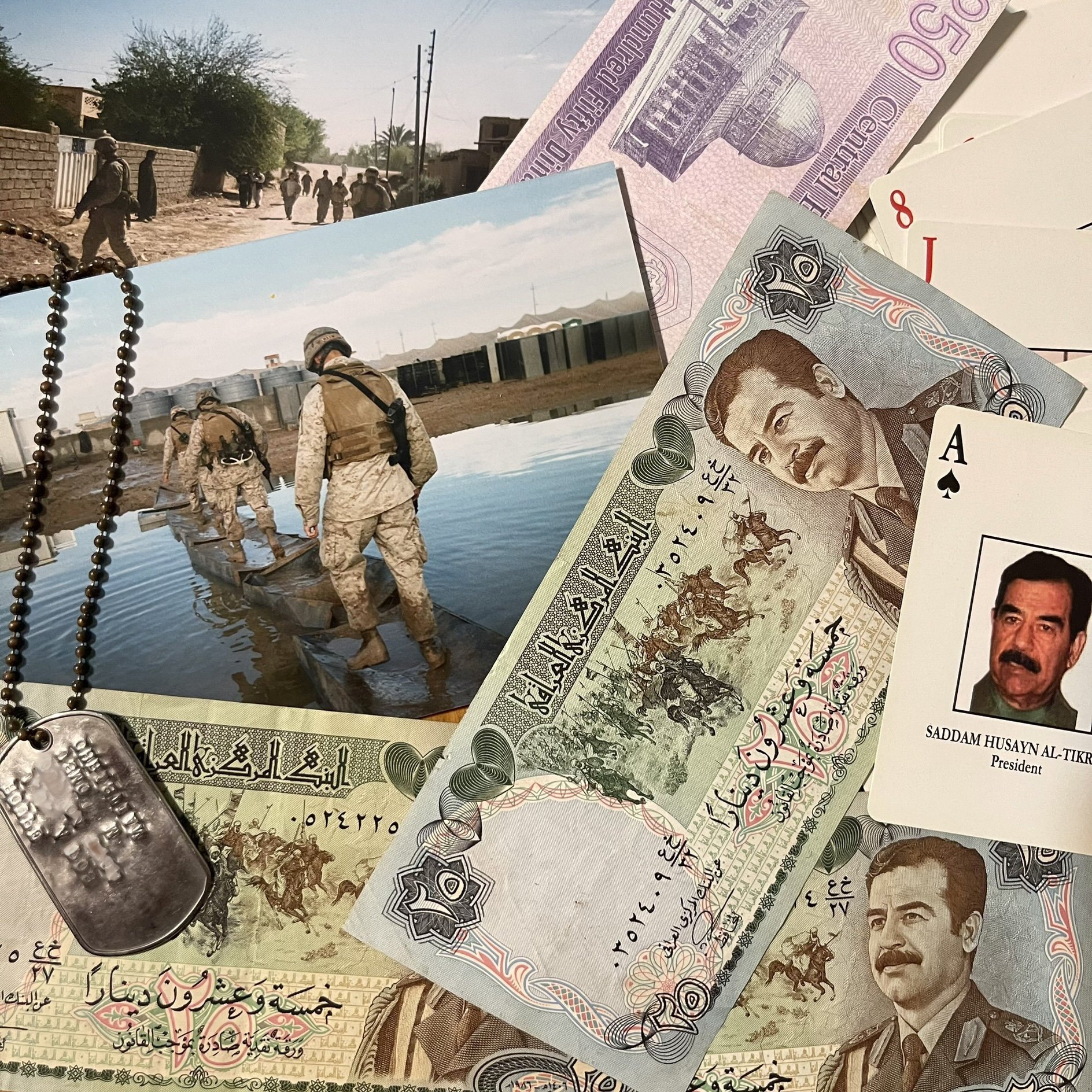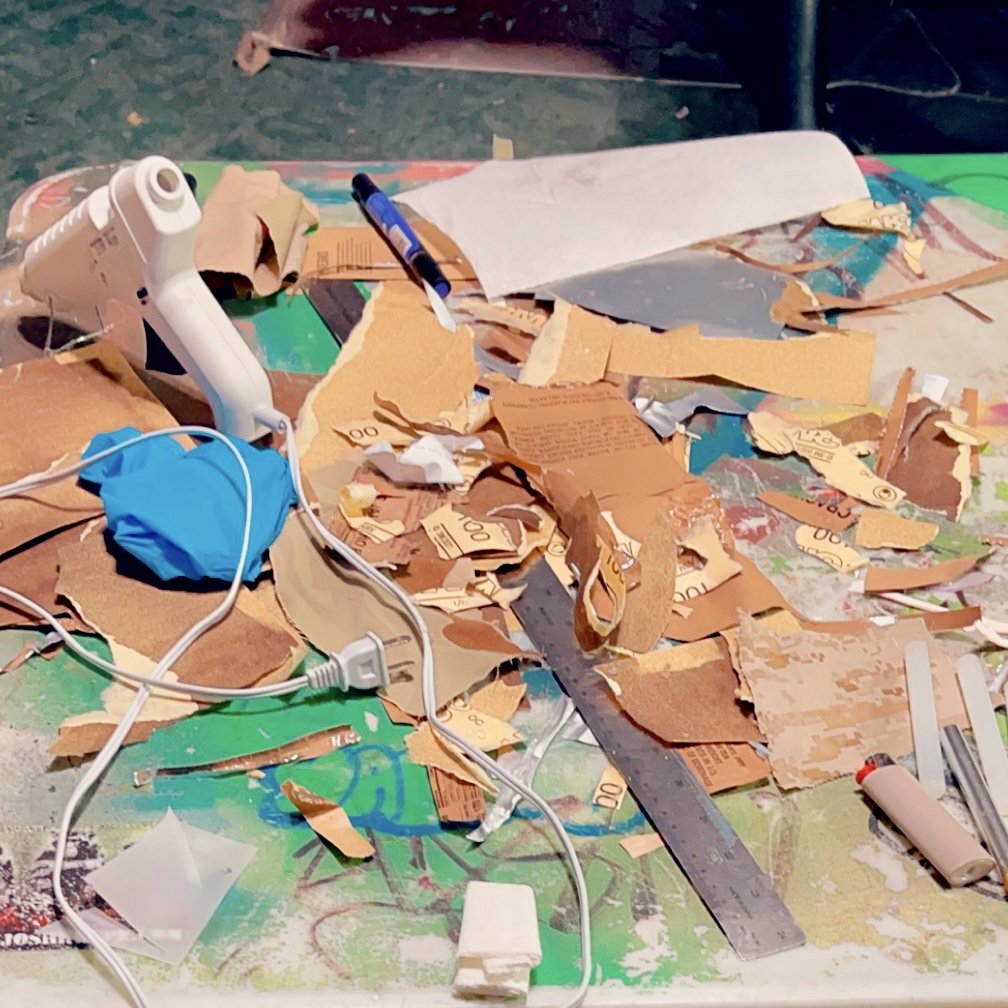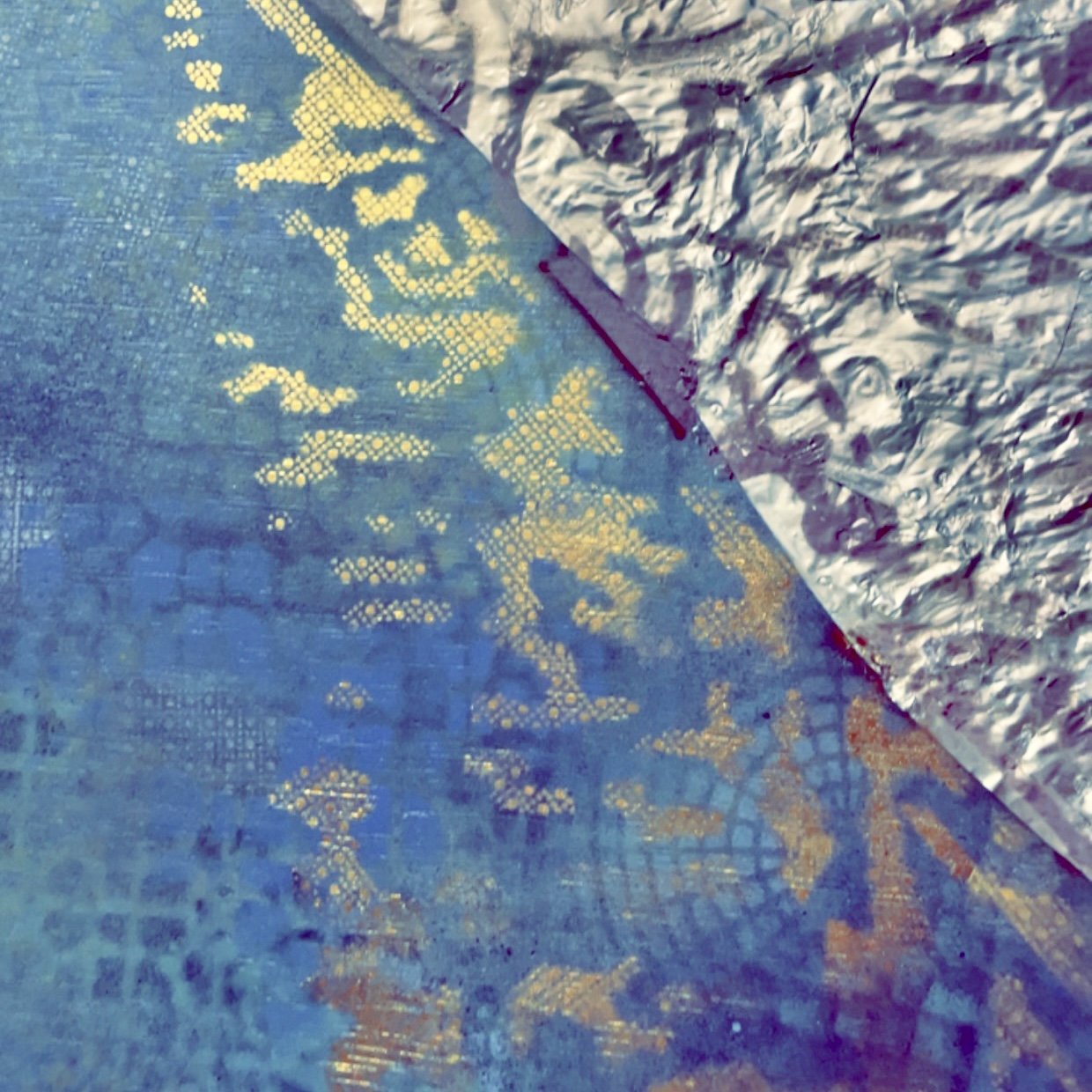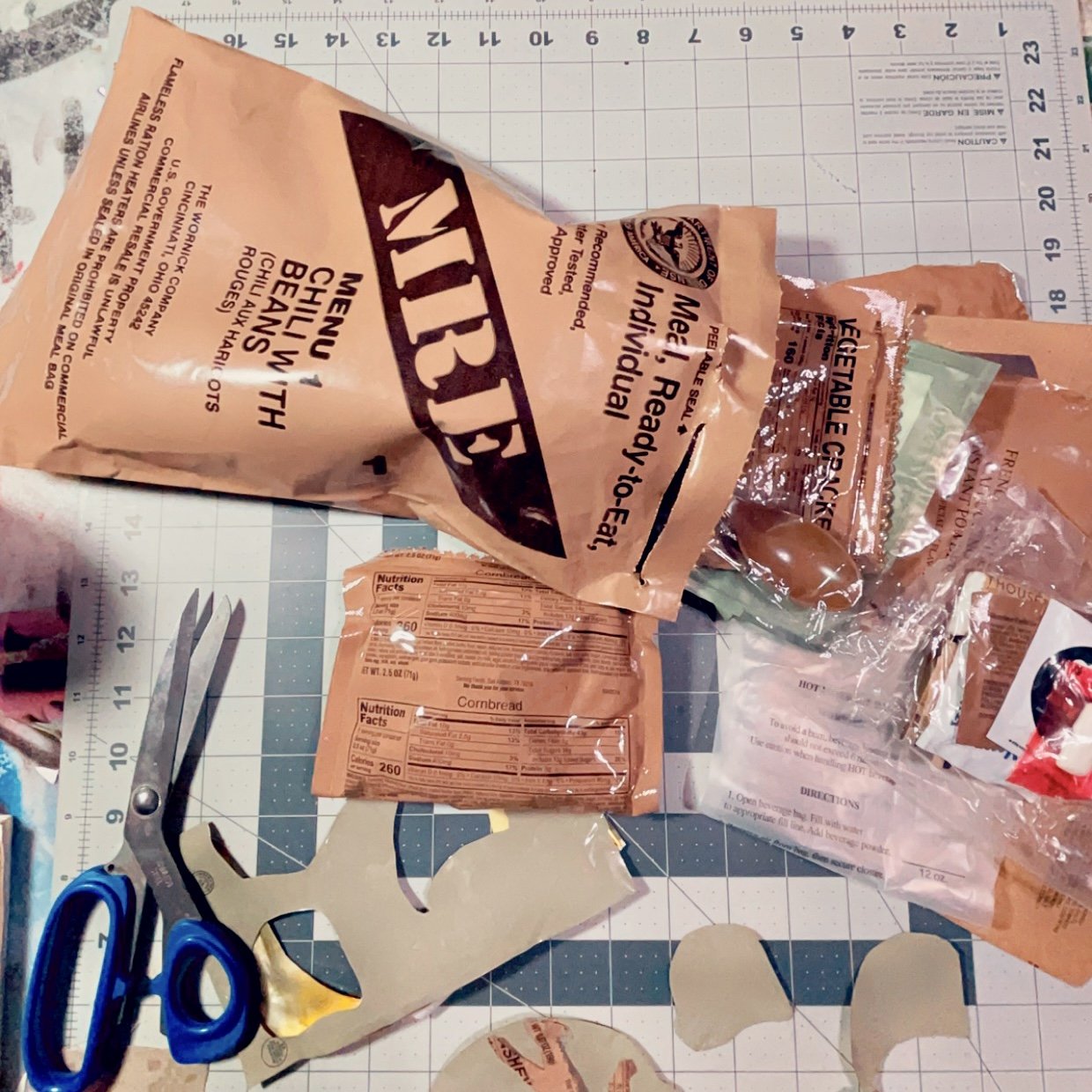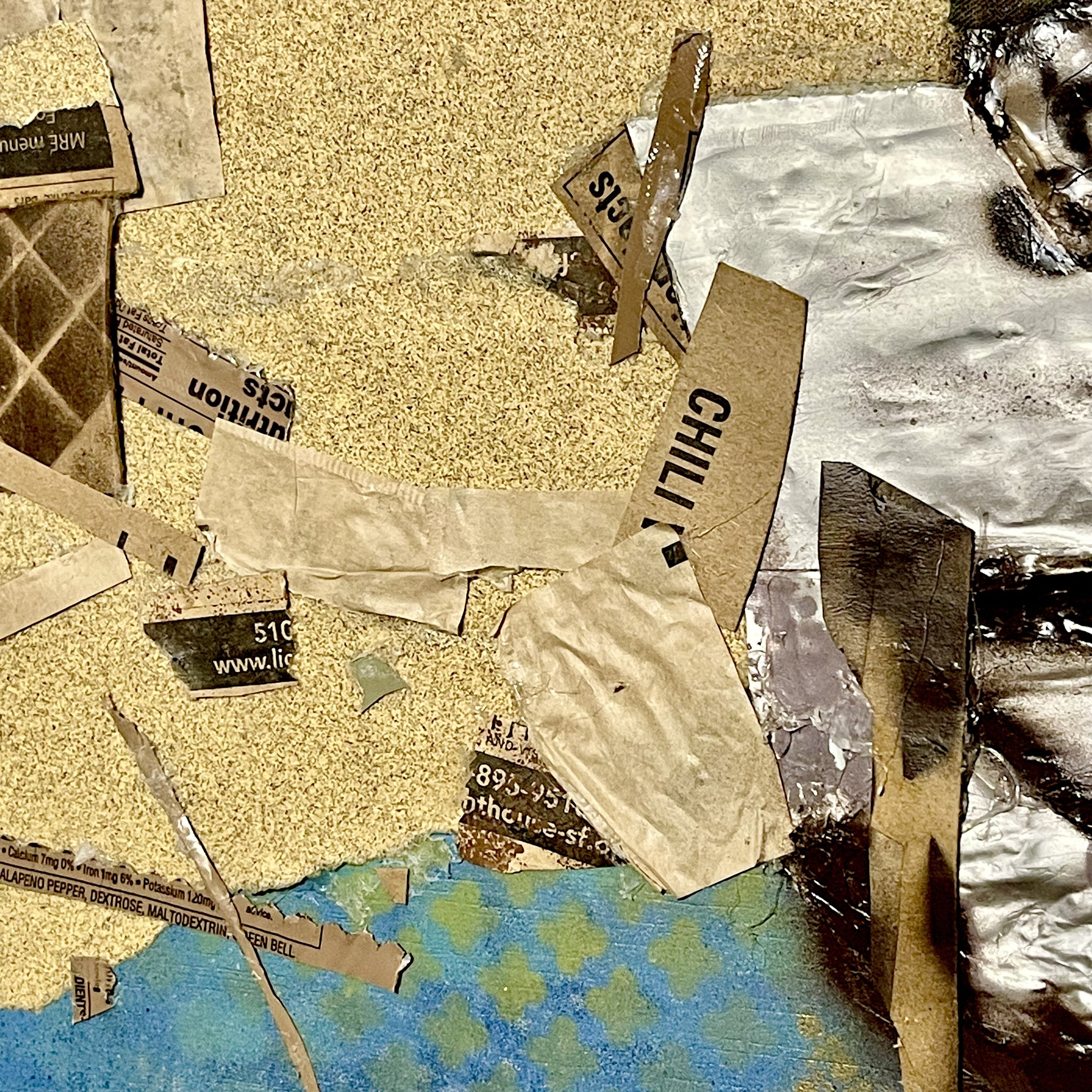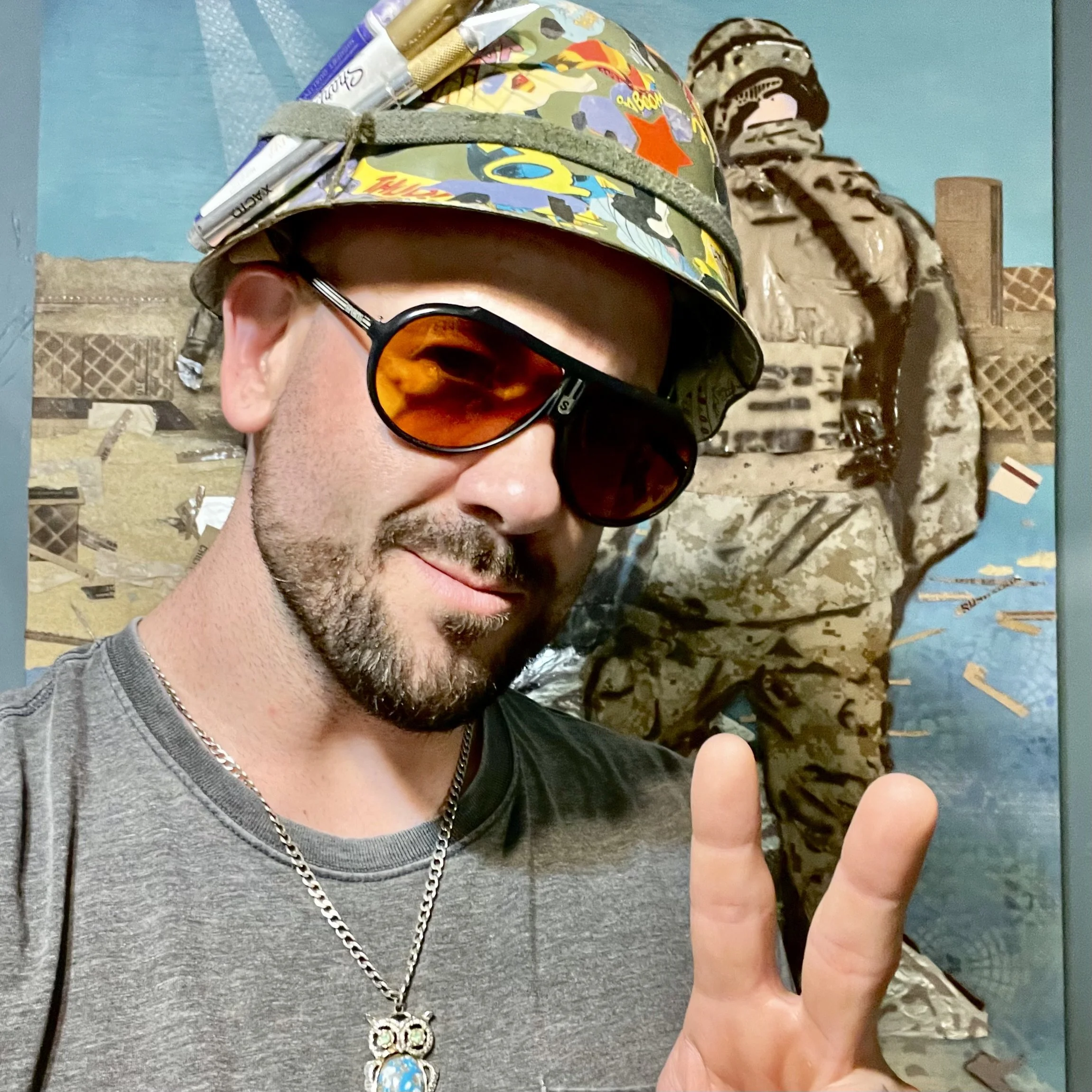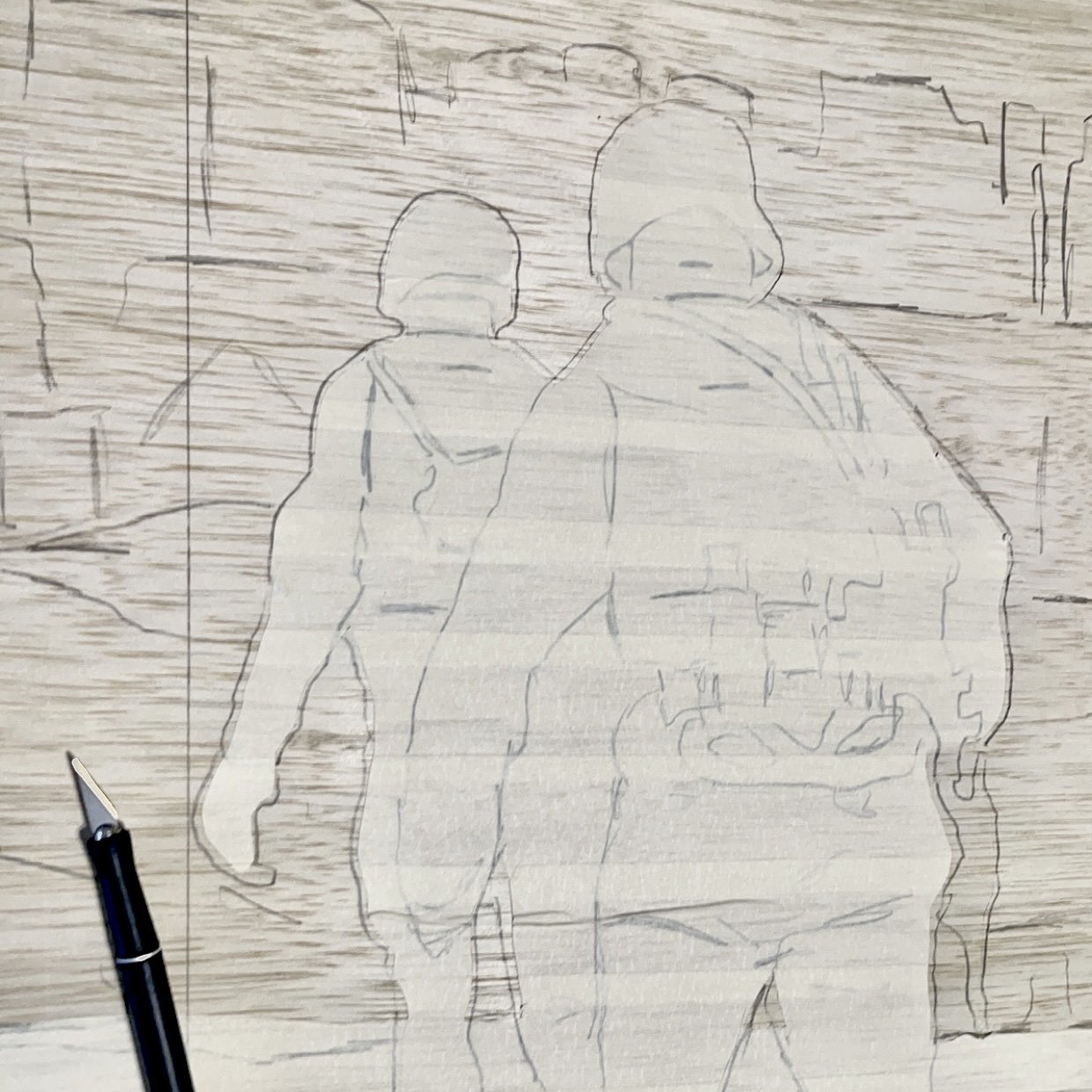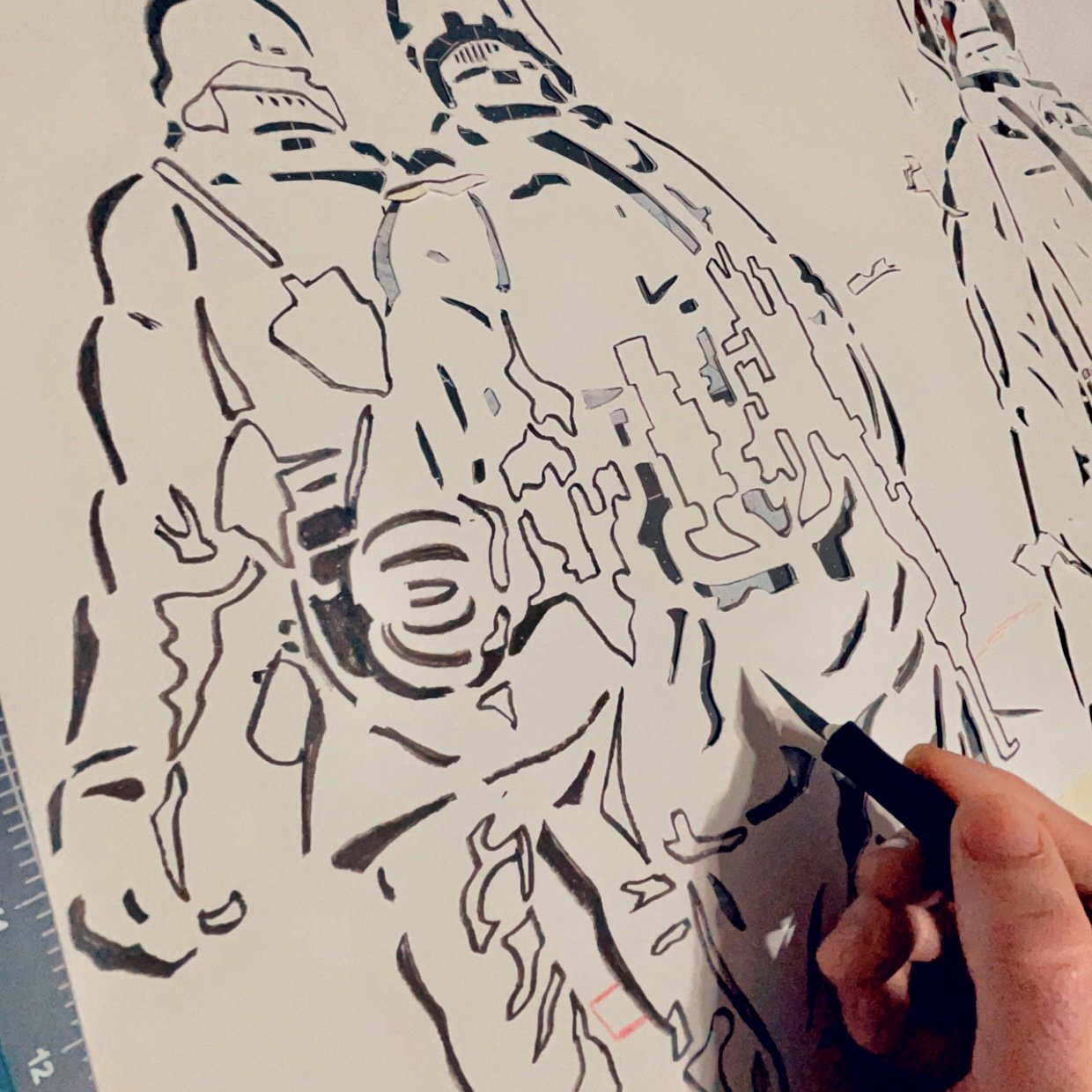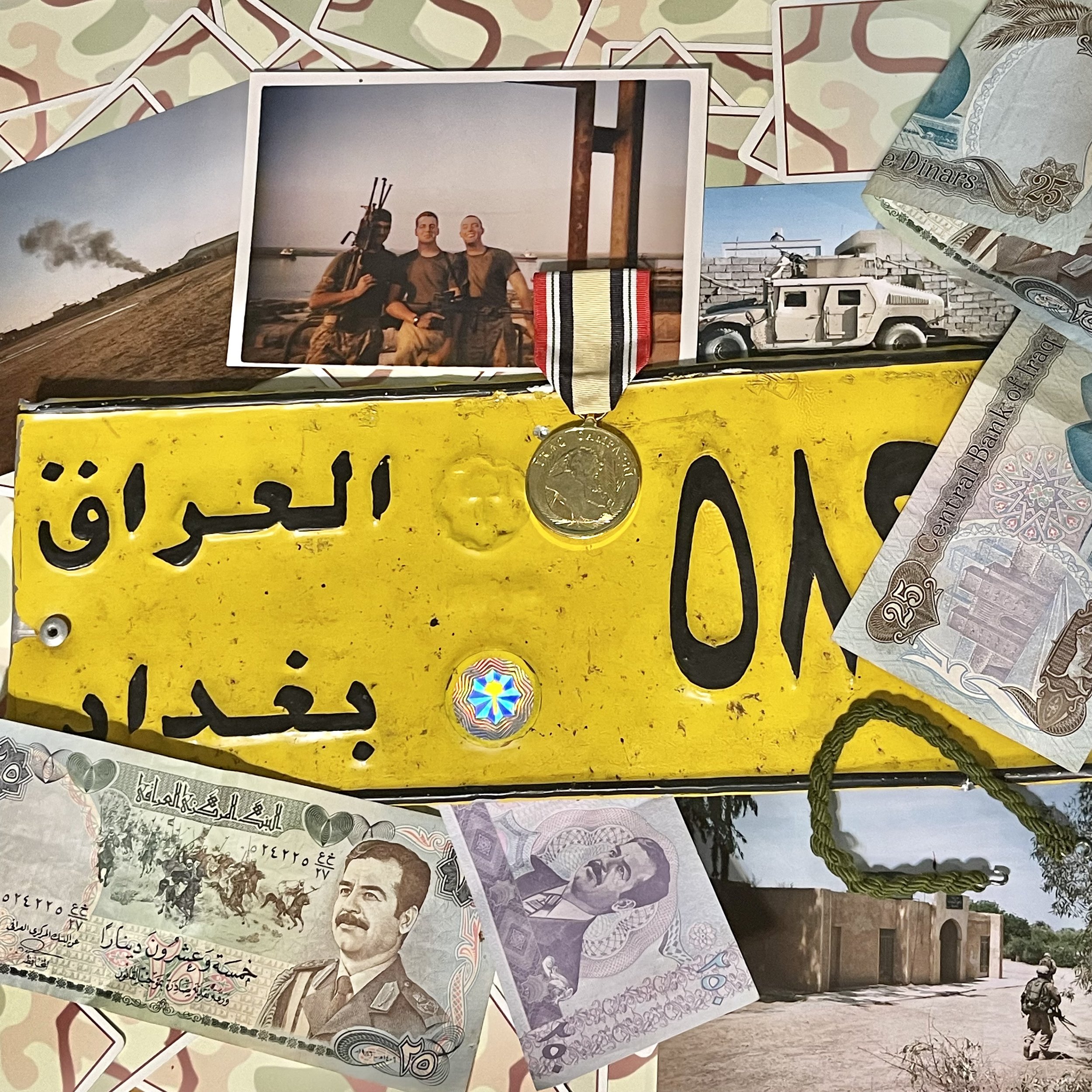Featured Work:
‘Road to Valhalla’
48 x 36”
spray paint & collage on birch panel
2023
In Norse mythology, Valhalla is a majestic hall located in Asgard, presided over by the god Odin. It is believed that half of those who die in combat are granted sanctuary in this sacred hall until the apocalyptic time of Ragnarök where they will be mustered again into battle alongside Odin to fight against the Jötnar.
The road to Valhalla is paved with dust and debris, selflessness and relentless courage. This painting is a tribute to those who marched into the storm without ever coming back.
Thesis of Materials:
I often find myself reluctant to share my work on here or social media because none of these images are actually my paintings—they are only photos of my paintings. I tend to work with large, tangible materials which are not the same as the 4” collection of pixels in which you see flattened onto your screen.
When selecting materials to use as collage in my work, I’m often considering how it relates to the subject matter. In the case of this painting, I used a variety of cardboards, plastics and foils gathered from M.R.E. meal rations, cloth collected from camouflaged fatigues and sheets of sandpaper (for the sand).
The Meal-Ready-to-Eat or M.R.E., is the primary staple in a mobilized infantryman’s diet. It consists of various envelopes of preserved food components, packaged together into roughly 2,000 calorie rations. Prior to stepping off on patrol, a soldier will often discard their rations of all nonessential packaging to reduce ounces, which would otherwise add to the pounds of cargo carried in their backpacks.
I recall cardboard sleeves being reused as postcards to write home or combined with bottle caps and pebbles to create chess/checkerboards. In the use of my painting, I utilized cardboard packaging for all the debris, the outer plastic bag for boots and kevlar vests and the reflective foil inside of the entrée envelopes to recreate the bridge.
The choice to use both tricolor and the later issued digital-style camouflage was deliberate to the window of time in the beginning of the Iraq war where both styles were authorized and present.
I had been amongst the third class to graduate Marine Corps Recruit Depot, (MCRD) San Diego in 2002 to receive the newly issued digital cammies. Senior service members were salty and reluctant to switch to the new uniforms until mandatory —so as a result, everywhere we went, we stood out as the new guys a.k.a. boots (fresh out of boot camp.)
The choice to depict the figures with jungle green helmets was also an intentional detail since desert colored helmet covers had not yet made their way to our unit thru the supply chain. Our PASGT combat helmets (used since the Invasion of Grenada) were later replaced by the USMC Lightweight helmet before future deployments.
The ability to adapt and overcome is second nature in improvising solutions to obstacles. Just as these Marines constructed bridges from discarded metal scraps, I hope that the scraps used in my work demonstrate alternative methods of utilization which inspire others to think outside of the box to get to where they need to be.
‘Road to Valhalla’ - metal print displayed on Bay City, Michigan’s Riverwalk as part of ‘Art Around the City’. Presented by Studio 23.


